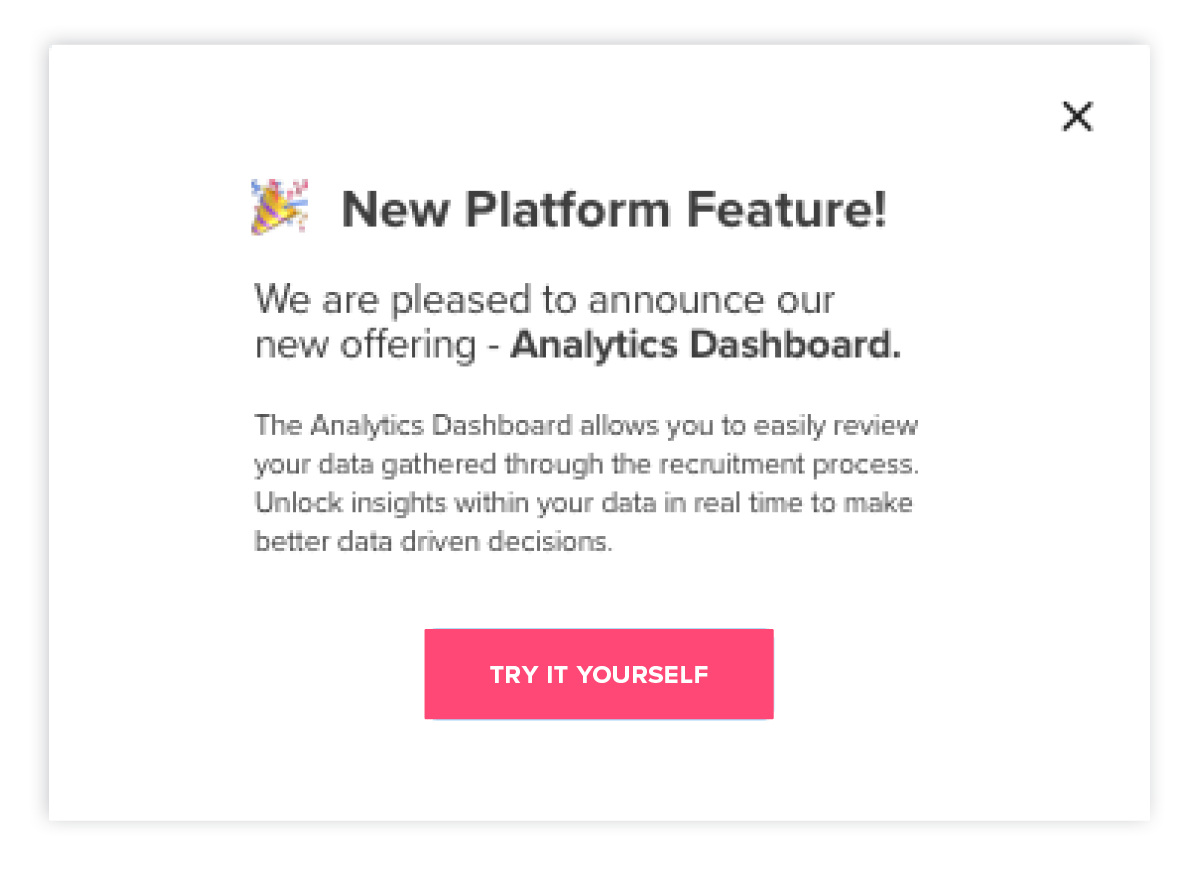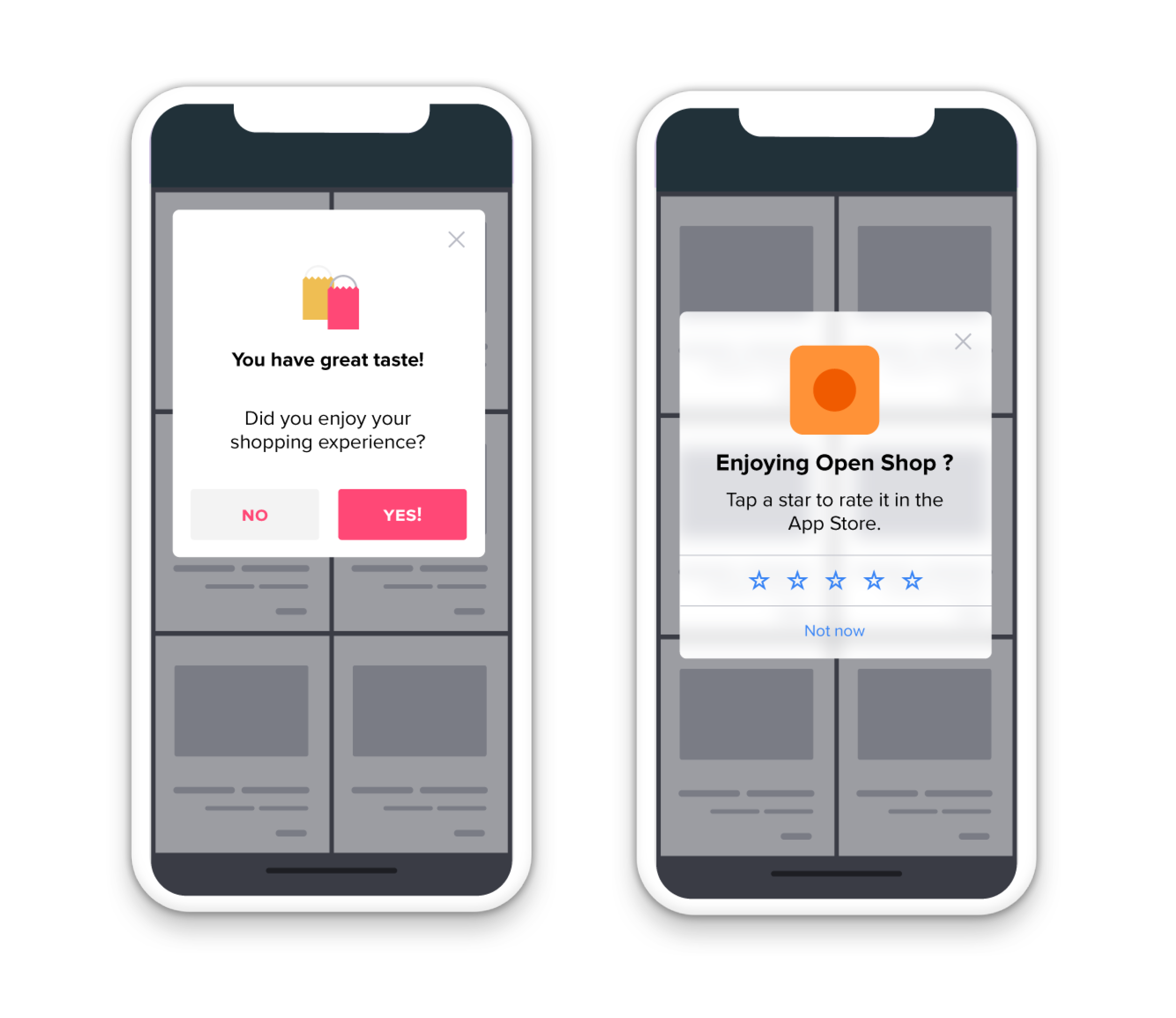They say the key to a successful relationship is communication.
For companies with mobile apps, we can take this sentiment a step further: The key to a successful relationship with your mobile app users is communication inside the app itself.
Think about it: Your customers are busy, their email inboxes are probably overflowing, and they don’t usually have time to seek out information on their own. Using in-app guides in your mobile app isn’t just useful in reaching customers directly–these messages help you reach the right customers at the right times to help improve their experience with your app and your brand as a whole.
Since there are so many different types of in-app messages, it’s helpful to think about the overarching use cases for which you can leverage them. Here are six of the most effective ways to leverage in-app messaging in your mobile app:
1. Customer communication: Reach customers right away
Whether it’s an urgent update (COVID was the ultimate test of which companies could communicate quickly) or letting users know that part of your application is under construction, using in-app guides means you can reach customers immediately. Instead of waiting for other teams to put together email communications or update customers during weekly status calls, leverage the most powerful communication channel already at our disposal: your application.
2. Feature announcement and adoption: Drive engagement with the right features
In order to ensure users are engaging with the right features, use in-app guides to promote new features and increase awareness of existing ones that aren’t seeing as high of usage levels as you’d like.

If you’re releasing something big that you want all of your users to know about, you can use a guide popup to grab their attention, and then create a multi-step tour that walks users through the new feature and how to use it. When it comes to driving adoption of existing features, tooltips are a good way to remind users of these areas of your app without overwhelming them or distracting from their intended workflows.
3. App version changes: Make it easy for users to upgrade
Getting users to upgrade to your latest app version can feel like an eternal struggle. Instead of relying on automatic updates that eventually force users to upgrade, take a more proactive approach and build reminders into the application itself. More importantly, explain why users are better off on the latest version–upgrading means a better experience with your app, since they’ll have access to all of the latest features and improvements. If you’re getting ready to sunset an app version, you can also use an in-app guide to notify anyone who is still using it that you intend to sunset the app version they are currently using.
4. Onboarding: Guide new app users to success
Onboarding is one of the most crucial parts of the product experience, and is especially effective when delivered in-app. You can use a variety of types of in-app guides to provide contextual information to new users as they navigate the app, and help them utilize the functionality that’s most relevant to them.
For example, use lightboxes to expose users to your app’s most important areas and actions by darkening the rest of the app and highlighting individual features at a time. On the other hand, sometimes apps are intuitive enough where all new users need is a single-page introduction and welcome message. Regardless of which method(s) you choose, make sure you’re providing new app users with the right amount of information so that they see value from the very first time they log in.
5. Feedback: Capture the customer voice
You should also think about how you can use guides to collect information from your mobile app users, in addition to communicating information to them. Collecting customer feedback in-app tends to result in higher response rates and more valuable feedback since users’ experience is top of mind.

These feedback guides can include Net Promoter Score (NPS) surveys, in-app polls, and even app store rating requests–just be sure you’re segmenting your user base so that requests are relevant and non-intrusive.
6. Promotions and offers: Create moments of delight
In addition to providing mobile app users with the most up-to-date and relevant information, you can also think of in-app messages as ways to add moments of delight in the user experience. Partner with your marketing team to identify any current promotions or campaigns that could benefit from in-app communications, like an upcoming event or donation program. When possible, try to tie in-app messages to seasonal events that are relevant to your customers, for example a “happy holidays” guide or “back to school” themed guide.
Want more best practices for creating mobile in-app guides to perfect your users’ experience? Download our new e-book here.


